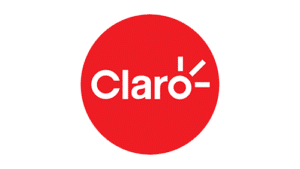What are the innovative ways that might be possible in the future to entertain and engage consumers? The third and last blog of our PVOD Blog Series explores potential trends and their possibilities.
By Rafael Rivera, Solutions Marketing Manager
I recently had the opportunity to view a screening of Black Panther featuring the complete musical score performed live to the film by the Atlanta Symphony Orchestra. It was quite a fantastic experience as symphony members were accompanied by Massamba Diop, world-renowned for his mastery of the tama (a drum from Senegal, West Africa), which served as the main driver of the film’s signature sound.
The spectacular entertainment experience had me thinking of all the innovative ways that might be possible in the future to entertain and engage consumers. In particular, given the recent experimentation of business distribution models via PVOD, I began to think of potential trends and their possibilities.
Smaller producers joining the PVOD race
With a reduction in barriers to entry, could smaller producers join the PVOD race? I can imagine opportunities for storytelling of different cultures and ethnicities that might otherwise not find a broader distribution. The example that comes to mind is an artist such as Kevin Hart, who has grown and expanded from his early stand-up comedy days to his now expansive LOL network with his wit and hustle. More recently, Mila Kunis and her spouse Ashton Kutcher have embarked on developing a new animated series called Stoner Cats. The business model is intriguing as the project is funded through the sale of non-fungible tokens (NFTs), where only token holders will have the ability to watch.
Breakthrough content
Will there be a growing trend of breakthrough content from other venues such as Broadway making their way into the PVOD world? Following the Disney+ model with Hamilton, could this be an avenue first to subscriber addition and ultimately long-term retention with the right strategy?
Gen Z and their preferences
These new viewers’ eyes have entirely different mindsets, and they can spend hours upon hours watching fellow gamers engage in live-action vs. competitors. Full disclosure, my son, who last year begged for a Star Wars-themed Halloween costume, this year was dressed as “Dream,” a YouTube celebrity that generates Minecraft gaming content to attract and entertain his over 20 million subscriber base. Perhaps this serves as a new form of live/sports competition content that consumers are willing to subscribe to and pay premium fees for more significant events.
This diverse and emerging entertainment world makes it clear that people make decisions based on title/content and not by the distribution model to consume it. The positive is that given the development of the right mix, PVOD stands to benefit. It’s a matter of research, testing, development, investment, and metrics to enable content owners and distributors to achieve business objectives.
New monetization possibilities
The future also seems to hold new monetization possibilities, shifting from dollars and cents to emerging currencies like NFTs, Bitcoin, or Ethereum, potentially expanding the consumer base and revenue potential. However, whatever the currency, where the broad appeal for valuable content appears, pirates soon follow.
No question, the future holds a world of potential and possibilities. Today, the economic damage of PVOD piracy to businesses is real, with tens of billions of dollars of content value disappearing every year. To ensure all your groundwork in discovering, promoting, and delivering the next water cooler (or school hallway) conversation-worthy content does not fall prey to pirates; you’ll need a clear anti-piracy strategy.
Download our eBook to learn more about how NAGRA works with studios and content creators to fight against content and service piracy. We can provide depth of experience across technology, law enforcement, and intelligence gathering with a proven track record to ensure that your next buzz-worthy release doesn’t become a revenue victim.























